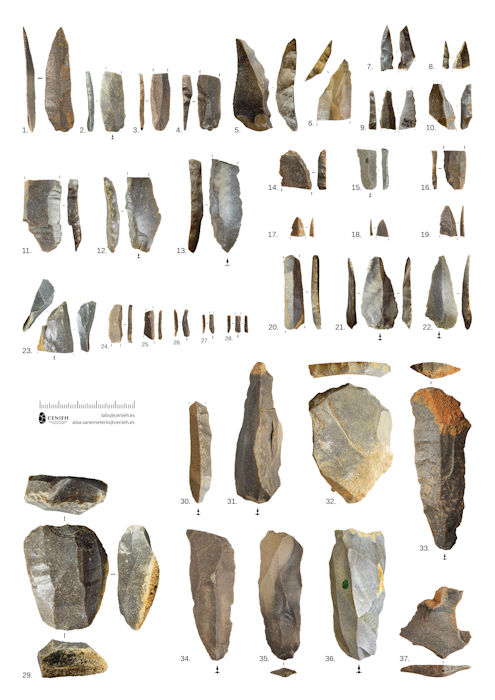Jan Bartek – AncientPages.com – Neandertals disappeared around 40,000 years ago, but many details of their extinction remain unclear.
To elucidate the situation, it is useful to explore how Neandertal populations were changing during their final millennia.

Credit: Adobe – Stock – ginettigino
A new study now sheds light on what caused the Neanderthals’ extinction in the Iberian Peninsula. Researchers say Neandertal populations in the Iberian Peninsula were experiencing local extinction and replacement even before Homo sapiens arrived. In this study, scientists examined the distribution of a tool complex known as the Châtelperronian, which is thought to be unique to certain populations of Neandertals in France and the Iberian Peninsula.
The researchers examined over 5,000 remains of Châtelperronian tools from a site called Aranbaltza II in Barrika, in the Northern Iberian Peninsula, dating to around 45,500 years ago. Comparing this site with other nearby Neandertal tool sites, they document that the Châtelperronian system does not overlap in time with older Neandertal technologies in this region, suggesting that Châtelperronian tools were not developed from earlier Iberian technology, but instead originated elsewhere before migrating into the region. They also found that Châtelperronian tools appear earlier than the first Homo sapiens tools in the Iberian Peninsula.

Selected lithic artifacts from the Châtelperronian at Aranbaltza II (Barrika, Spain). Credit: Rios-Garaizar et al., 2022, PLOS ONE, CC-BY 4.0
Based on this evidence, the authors suggest that older Iberian Neandertal populations disappeared, taking their tool styles with them, and were replaced by different Neandertal groups using Châtelperronian tools, likely migrating from France, and these populations were in turn replaced by Homo sapiens. The researchers propose that these patterns of local Neandertal extinction and replacement will be an important area of future study, as they might have played a significant role in the decline and ultimate demise of Neandertals.
See also: More Archaeology News
The authors add: “Neandertals with Châtelperronian technology occupied the Northern Iberian Peninsula ca. 43,000 years ago. This territory was unoccupied at the time, following the earlier disappearance of local Neandertal groups, along with their Mousterian technology.”
The study was published in PLOS ONE
Written by Jan Bartek – AncientPages.com Staff Writer





